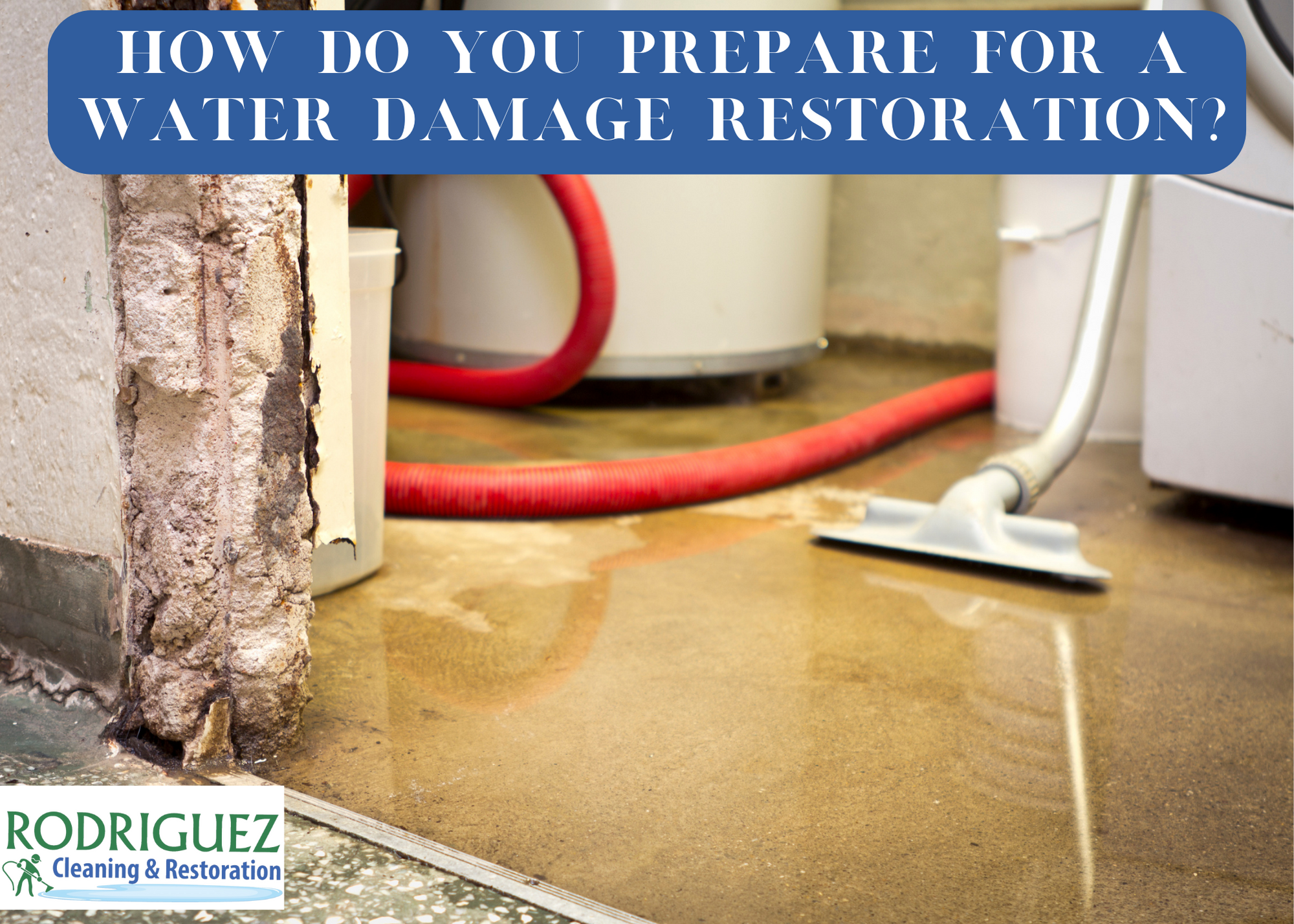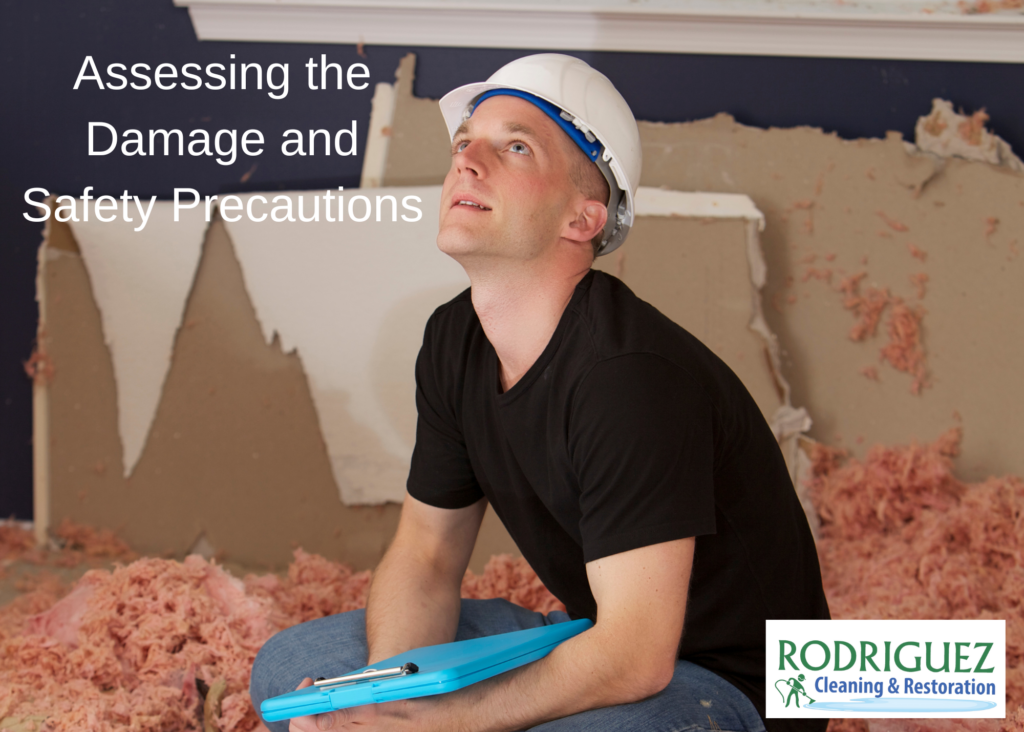Water damage can occur unexpectedly and have devastating effects. Whether caused by a burst pipe or a natural disaster, it is essential to prepare for the aftermath of water damage. Preparation can help mitigate the damage and reduce restoration costs. This article will provide a comprehensive guide on preparing for water damage restoration.
1. Assessing the Damage and Safety Precautions
Water damage can be deceptive and, if not properly addressed, could lead to more significant problems. Check for visible stains on walls and ceilings, along with discoloration or changes in texture. Take note of any foul odors or mold growth. Look around carefully for dampness, standing water, or leaking pipes within your living spaces. Inspect the flooring beneath rugs and carpets for any damp spots or buckling that could indicate water has seeped underneath. Pay close attention to wooden structures prone to rot in chronic moisture conditions.
Before entering the damaged area, wear protective gear such as rubber boots, gloves, and a face mask. These are to safeguard yourself against hazardous substances like mold growth and standing water contaminants. Always ensure that the area is well-ventilated. Moreover, moving any damaged equipment without ensuring they are safe to handle first. If possible, use air dryers or dehumidifiers to eliminate moisture from your surfaces and prevent further damage.
2. Making Emergency Repairs and Turning off Utilities
It’s crucial to take immediate action when water leaks or floods occur. First, halt the water source to prevent additional water from entering the home. Unplugging electronics in the affected area is also necessary, especially if the water level is high. That will prevent electrocution and fire hazards. Then proceed to remove water as soon as possible. You can also apply temporary repairs to prevent further damage. Apply a sealant or epoxy to patch holes or cracks on walls or floors. Sealants can help trap water inside pipes and prevent water from spilling into other parts. Using duct tape on small cracks and holes can also be a temporary fix. If these repairs begin to fail, call in professionals who can provide a permanent solution. You can also consider having a professional water remediation team remove any remaining water.
Electrical problems can be dangerous and result in fires or electrocution. Always turn off utilities when a flood or water leak occurs. Gas leaks can also be caused by water damage, which can be difficult to detect. Turning off the utilities will help to ensure no electrical or gas-related hazards. Many people hesitate to turn off their utilities because they don’t want to be without power. However, it’s important to remember that safety should always come first. Turning off the utilities may be inconvenient, but it can help to prevent serious damage and safety hazards. Once the water has been cleaned up, you can turn the utilities back on and return to normal life.
3. Documenting the Damage and Contacting the Insurance
Documenting water damage with photos and videos can be a lifesaver when dealing with insurance companies or contractors for water restoration. These records act as proof of your claim. This documentation can highlight the following:
• The extent of the damage
• The source of the water
• The quality of the repairs that were performed.
Insurance companies will want to know the size of the damage to estimate the compensation. Water damage can be extensive and lead to mold, structural damage, or even a total home loss. Thus, these recordings give insurance adjusters a better picture of what needs to be repaired.
Without documenting the source of the damage, it may not be easy to persuade the insurance company. You should have records of where the water came from and when it first started to cause damage. Furthermore, if the repairs are not done properly, they can cause further damage. When using a contractor, record every step and archive the pictures. Before filing a claim, check your insurance policy to know what kind of coverage you have. Some insurance policies only cover specific types of water damage. You can contact your insurance company for a more detailed explanation
Begin filing your claim and report the claim as soon as possible. Your insurance agent will guide you through the process and provide you with the necessary forms to fill out. The insurance company will then assign an adjuster to assess the damage. They will investigate the damage, determine if it’s covered, and assess the cost of repairs. The adjuster’s assessment will determine the compensation amount you’ll receive. The insurance company will then process the payment. If you’re happy with the payout, you can sign the agreement and proceed with the repairs. Alternatively, you can contact your insurer to negotiate a better settlement if the payout isn’t satisfactory.
7. Preventing Future Water Damage
Water damage restoration is not the sole responsibility of the restoration company; there are things that homeowners can do:
1. Ensure that everyone is safe. Evacuate everyone until experts arrive to assess the situation. Additionally, if the damage was caused by contaminated water, avoid contact with the water.
2. Contact a water damage restoration company. Many reputable companies offer 24/7 services. Provide detailed information about the situation, including the location and the extent of the damage. Doing this will help the company to respond with the necessary resources.
Ensure important documents are safe. It is possible to experience loss of personal property or essential documents. Hence secure these items in a safe and dry place
Inspecting and Maintaining Plumbing Systems
To prevent future water damage, inspecting and properly maintaining your systems is essential. Regular inspections and maintenance can help identify potential problems before they become major issues, thus saving you time, money, and stress in the long run. Checking for leaks in pipes, faucets, and appliances that use water regularly is essential. Ensure that gutters are clear of debris and flowing properly. Consider installing sump pumps or backflow preventers in areas prone to flooding. Proper ventilation can also help keep moisture at bay by preventing condensation buildup that leads to mold growth. Professional restoration services should be sought immediately if water damage occurs; however, simply being proactive about inspection and maintenance now can go a long way in preventing such disasters from occurring in the first place.
Installing Water Alarms and Shut-Off Valves
Installing water alarms and shut-off valves is essential to maintaining the safety and integrity of one’s plumbing system. Water alarms are electronic devices that alert homeowners to potential leaks, floods, or excess moisture in their homes. These devices can prevent significant damage to floors, walls, and furnishings and reduce health risks associated with mold growth. On the other hand, shut-off valves regulate water flow in a home’s plumbing system, which can help prevent costly water waste and supply chain issues. Professional plumbers can assist homeowners in selecting the appropriate alarms and shut-off valves for their specific needs, ensuring they function efficiently when needed. Regular maintenance checks by licensed professionals will also provide the optimal performance of these systems over time, thus reducing the risk of sudden breakdowns or malfunctions.
Keep your basement or crawlspace dry.
M these areas are not adequately waterproofed; water can seep in and cause structural damage while fostering mold and mildew growth. Ensuring that your foundation and perimeter drainage system is properly sealed and functioning is essential to keep water out of these areas. Regularly inspect the basement or crawlspace to look for signs of moisture, such as water stains, damp or musty odors, or warped walls.
Make sure that your gutters and downspouts are clean and functional.
Clogged gutters and downspouts can cause water to overflow and damage your home’s siding or foundation. Regularly clean your gutters and downspouts, especially after storms or during the fall when leaves can accumulate. Additionally, consider installing extensions on downspouts to direct water away from your home’s foundation. By taking these preventative measures, you can avoid costly water damage repairs and safeguard your home.




